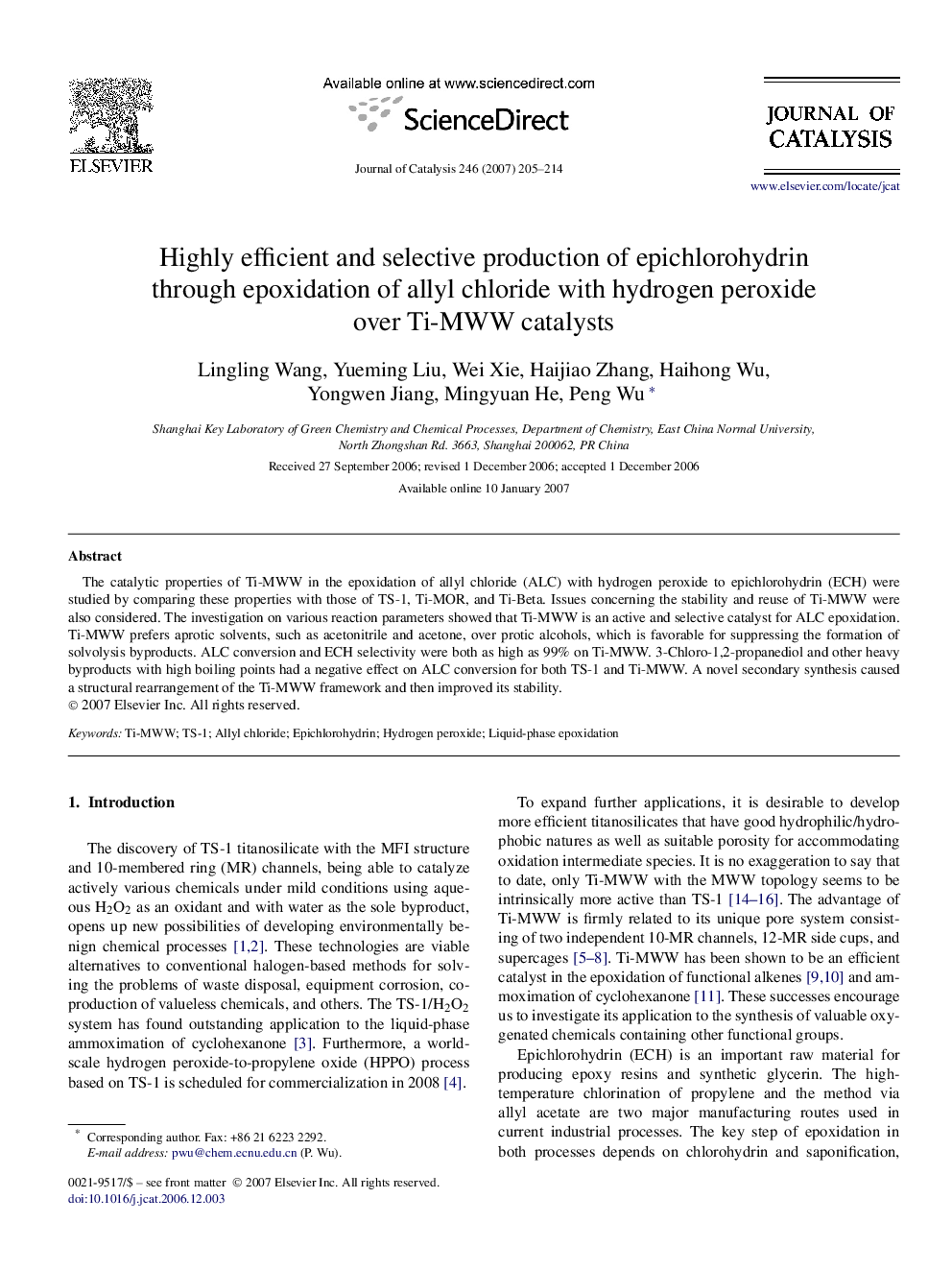| Article ID | Journal | Published Year | Pages | File Type |
|---|---|---|---|---|
| 62915 | Journal of Catalysis | 2007 | 10 Pages |
The catalytic properties of Ti-MWW in the epoxidation of allyl chloride (ALC) with hydrogen peroxide to epichlorohydrin (ECH) were studied by comparing these properties with those of TS-1, Ti-MOR, and Ti-Beta. Issues concerning the stability and reuse of Ti-MWW were also considered. The investigation on various reaction parameters showed that Ti-MWW is an active and selective catalyst for ALC epoxidation. Ti-MWW prefers aprotic solvents, such as acetonitrile and acetone, over protic alcohols, which is favorable for suppressing the formation of solvolysis byproducts. ALC conversion and ECH selectivity were both as high as 99% on Ti-MWW. 3-Chloro-1,2-propanediol and other heavy byproducts with high boiling points had a negative effect on ALC conversion for both TS-1 and Ti-MWW. A novel secondary synthesis caused a structural rearrangement of the Ti-MWW framework and then improved its stability.
